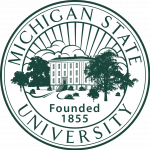Sustainable Intensification Indicators Framework
Sustainable Intensification Indicators Framework:
Description:
Sustainable Intensification (SI) focuses on improving the efficient use of resources for agriculture, with the goal of producing more food on the same amount of land but with reduced negative environmental or social impacts (Musumba et al. 2017). SI has the potential to reduce natural resource degradation resulting from population pressure and increased food demand through a more efficient use of resources. There are multiple approaches to SI and also multi-faceted impacts, which include but are not limited to improved environmental quality, soil quality and soil fertility, agronomic productivity, profitability, food security and nutrition. Additional impacts include potential shifts in the distribution of benefits and labor demands within and between households, highlighting the complexity of farming systems research. As a result, SI is quite useful as a conceptual framework that offers insights into complexity, rather than being employed as a static label. In fact, the interdisciplinary nature of SI presents a unique opportunity to ascertain benefits and trade-offs associated with employing new cropping technologies. For instance, increased agricultural productivity associated with a new cropping system may not always result in evenly distributed economic or nutritional benefits within or between households.
The SI indicator framework is a tool to specifically assess and compare potential impacts across multiple domains. Researchers at the <Global Change Learning Lab for Sub-Saharan Africa> and the University of Florida have been developing a SI indicator framework with the objective of guiding SI research (Musumba et al 2017). The framework is developed primarily for research in development projects, yet is also flexible enough to be useful for broader investigation of SI efforts. Indicators and metrics are first categorized into five domains (productivity, economic, environmental, social and human condition), which are each further broken down by scale (field, farm, households, and landscape).
For additional information, view the Guide for SI Assessment Framework and the Sustainable Intensification Assessment Methods Manual.
Principles:
- Interdisciplinary in nature, offers a tool to view important tradeoffs that may result from changes in agricultural systems,
- Offers a comprehensive set of indicators that can be tailored for the relevance and efficacy of specific projects,
- Provides a common framework to guide SI research and collaboration,
- Generally designed to be utilized system “pre-adoption” in order to facilitate information generation for the roll-out phase of new technologies or approaches,
- Employs radar charts (figure 1) to visually compare performance, and identify specific benefits and tradeoffs.
Debates:
- SI is also used as a buzzword to label agricultural systems or technologies that may offer environmental benefits, overlooking the interdisciplinary and complex social factors impacting sustainability,
- Can be time intensive to collect the full suite of data for a full SI indicator framework analysis,
- Analyzing and presenting multiple sustainability indicators can be complex to analyze and communicate,
- Will often be strengthened by capturing temporal (or longitudinal) data in order to present change over time,
- Will also be strengthened by capturing contextual data in order to identify benefits and tradeoffs for different farmer typologies,
- Relies on proxy indicators in cases where no direct measurement exists or direct measurement is too expensive.
Links:
Guide for SI Assessment Framework
Sustainable Intensification Assessment Methods Manual
Africa Rising Wikispace on Sustainable Intensification
Kansas State University Sustainable Intensification Innovation Lab
Learning Lab Resources:
Grabowski, P., M. Musumba, C. Palm, and S. Snapp. Presentation- Sustainable intensification indicator framework for Africa Rising. October, 2016.
Musumba, M., C. Palm, P. Grabowski, and S. Snapp. 2017. A Framework for Selecting and Analyzing Indicators of Sustainable intensification. Forthcoming.
Smith, A., S. Snapp, R. Chikowo, P. Thorne, M. Bekunda, and J. Glover. 2016. Measuring sustainable intensification in smallholder agroecosystems: A review. Global Food Security. http://dx.doi.org/10.1016/j.gfs.2016.11.002


